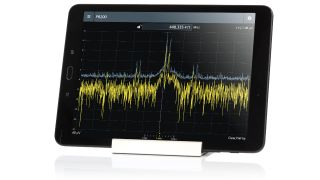Exceptional performance for next generation radiomonitoring
The growing demand for wireless network connectivity calls for new, more complex transmission standards aimed at optimizing spectral efficiency and exploring ever higher frequency ranges with more available bandwidth. The spectrum is becoming increasingly dense and channel bandwidths of 320 MHz (Wi-Fi 7), 400 MHz (5G FR2) and well beyond (6G) will be used. This ongoing trend makes it increasingly difficult for regulatory authorities to verify proper spectrum usage in these wideband and highly dynamic spectrum environments.
With its future-proof technical performance specifications, the innovative R&S®ESMW ultrawideband monitoring receiver is the perfect solution for next generation fixed and mobile radiomonitoring stations tasked with spectrum monitoring and interference hunting. The receiver’s modular option structure with multiple hardware and software extensions gives customers the flexibility to choose the right solution for their applications.












